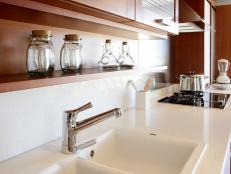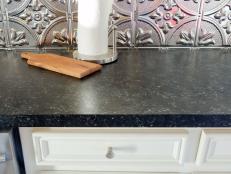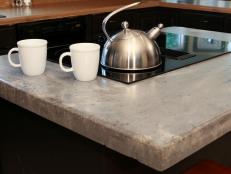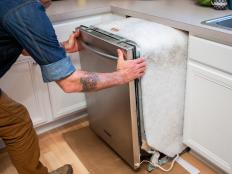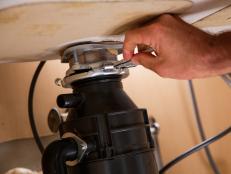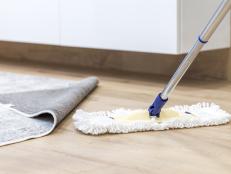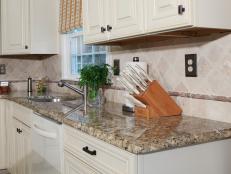How to Remove a Kitchen Countertop
Save money on your kitchen remodel, and remove your countertop yourself. We share steps on how to remove a laminate countertop.

Jalynn Baker

Materials and Tools:
- power drill/driver
- razor knife
- paint scraper
- hammer
- pry bar
- stud finder
- flashlight or headlamp
Removing a laminate kitchen countertop is relatively easy because it’s held onto the cabinets with a combination of adhesive and screws. Most laminate countertops use silicone adhesive. Some countertop installations, such as granite, will use an epoxy or construction adhesive like liquid nails. If your counters are attached with construction adhesive or epoxy, the process is difficult to do without damaging the countertops. It's best to leave that job to the pros. Below, we share steps on how to remove laminate countertops.
Cut the Silicone Adhesive
Most countertops are made of two parts — the counter and the backsplash. The backsplash is attached to the wall and countertop. You will need to remove it before prying up the countertop. To do this, cut along the entire edge of silicone adhesive between the wall and backsplash using a razor knife.
Jalynn Baker
Remove the Backsplash
There is more silicone adhesive on the back of the backsplash. Place a paint scraper between the backsplash and the wall, and drive it downward with a few taps of a hammer (Image 1). Do this along the length of the backsplash until the backsplash is mostly detached from the wall. In order to gain enough leverage to remove a stubborn backsplash, push against a structural stud in the wall with a pry bar. Use a stud finder to locate the wall stud behind the backsplash (Image 2). There should be a stud in the wall about every 16 inches. Place the pry bar between the backsplash and the wall stud, and push the backsplash off the wall (Image 3).

Jalynn Baker
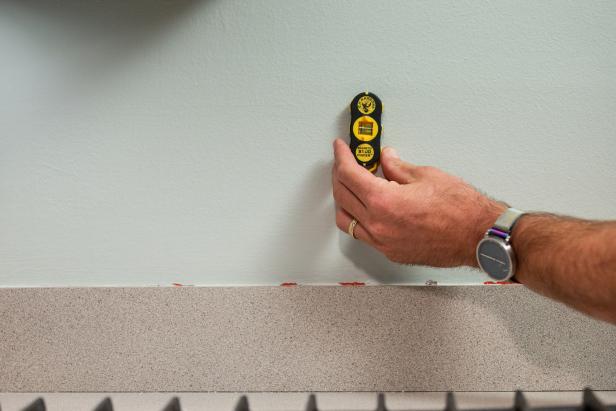
Jalynn Baker
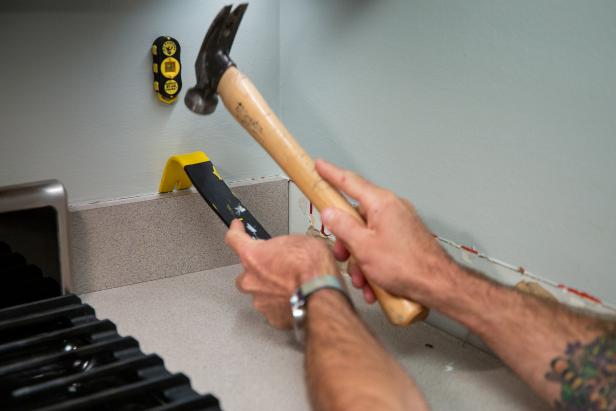
Jalynn Baker
Remove the Countertop Screws
Remove as many items from your cabinets as necessary. You will probably want to detach all of the drawers and remove the cookware and appliances taking up space in your cabinets.
Once you have enough space in your cabinets, look up underneath the countertop to locate the screws holding the countertop onto the cabinets. You may need to lay on your back, and stick your head into the cabinet. Using a driver, remove each screw holding your countertop in place.

Jalynn Baker
Break the Silicone Adhesive Bond
The countertop is most likely held in place with silicone adhesive. Cut the silicone adhesive between the cabinet and countertop using a razor knife. Be careful not to damage the front of the cabinets. Next, position the paint scraper in the seam between the cabinets and countertop, and gently tap it with a hammer. Drive the paint scraper forward about an inch to break the adhesive seal (Image 1). Ask a buddy to pull the countertop up to make this process easier (Image 2).
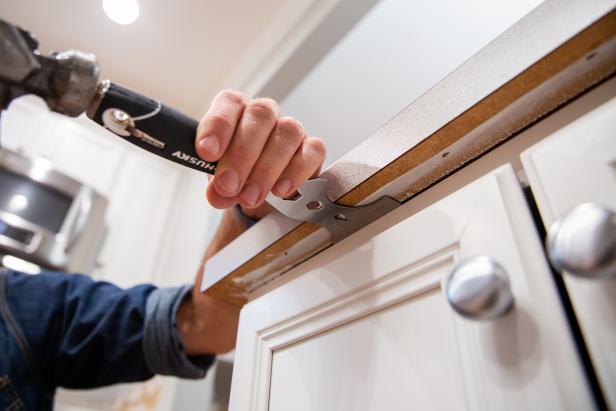
Jalynn Baker
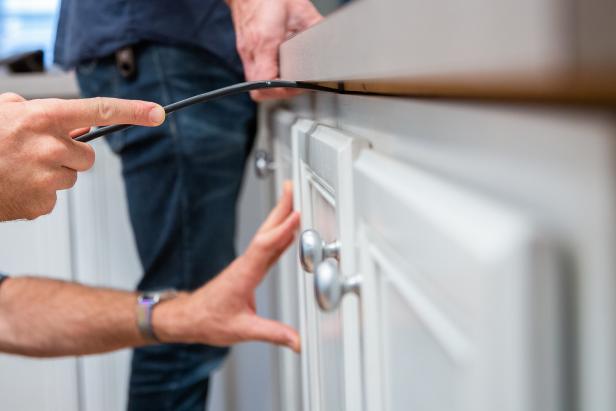
Jalynn Baker
Remove the Countertop
Place the pry bar into the separated area between the cabinet and countertop, and apply gentle pressure upward (Image 1). Keep moving along the cabinet, using the paint scraper to break the adhesive between the countertop and cabinet. Pulling up on the counter will become easier as more of the adhesive bond is separated. Use the paint scraper and pry bar to fully detach the countertop from the cabinets, and completely remove the countertop with the help of a buddy (Image 2).
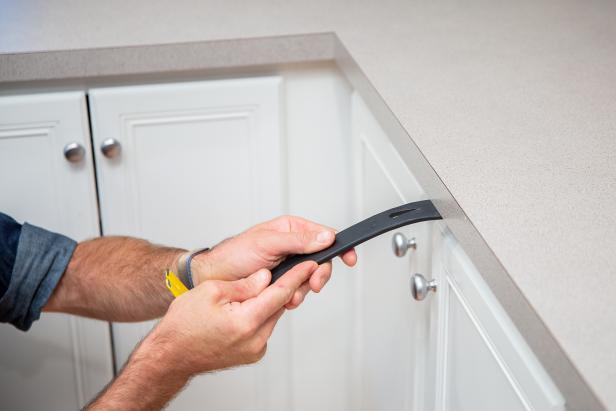
Jalynn Baker
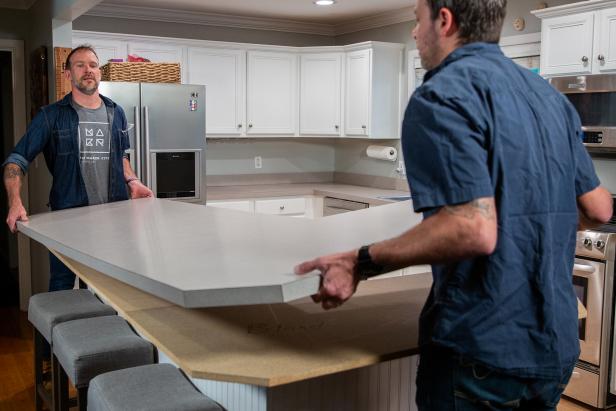
Jalynn Baker
Remove the Plywood Sub-Top
Use the paint scraper to remove the remaining silicone adhesive from the top edge of the cabinets. Now, you’re ready to install new kitchen countertops. If you’re replacing with another laminate countertop, keep the sub-top attached. If you’re replacing with a stone countertop, remove the sub-top by removing the screws (Images 1-3).
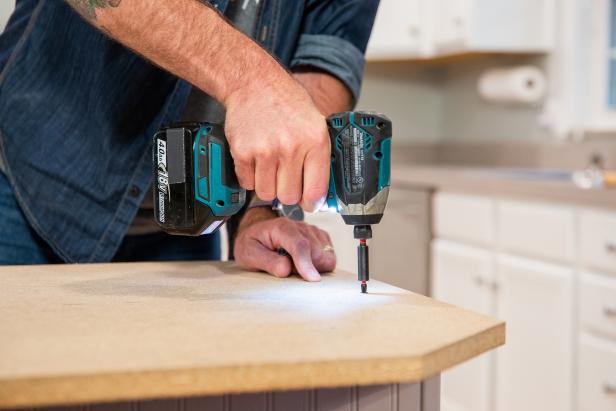
Jalynn Baker

Jalynn Baker

Jalynn Baker






